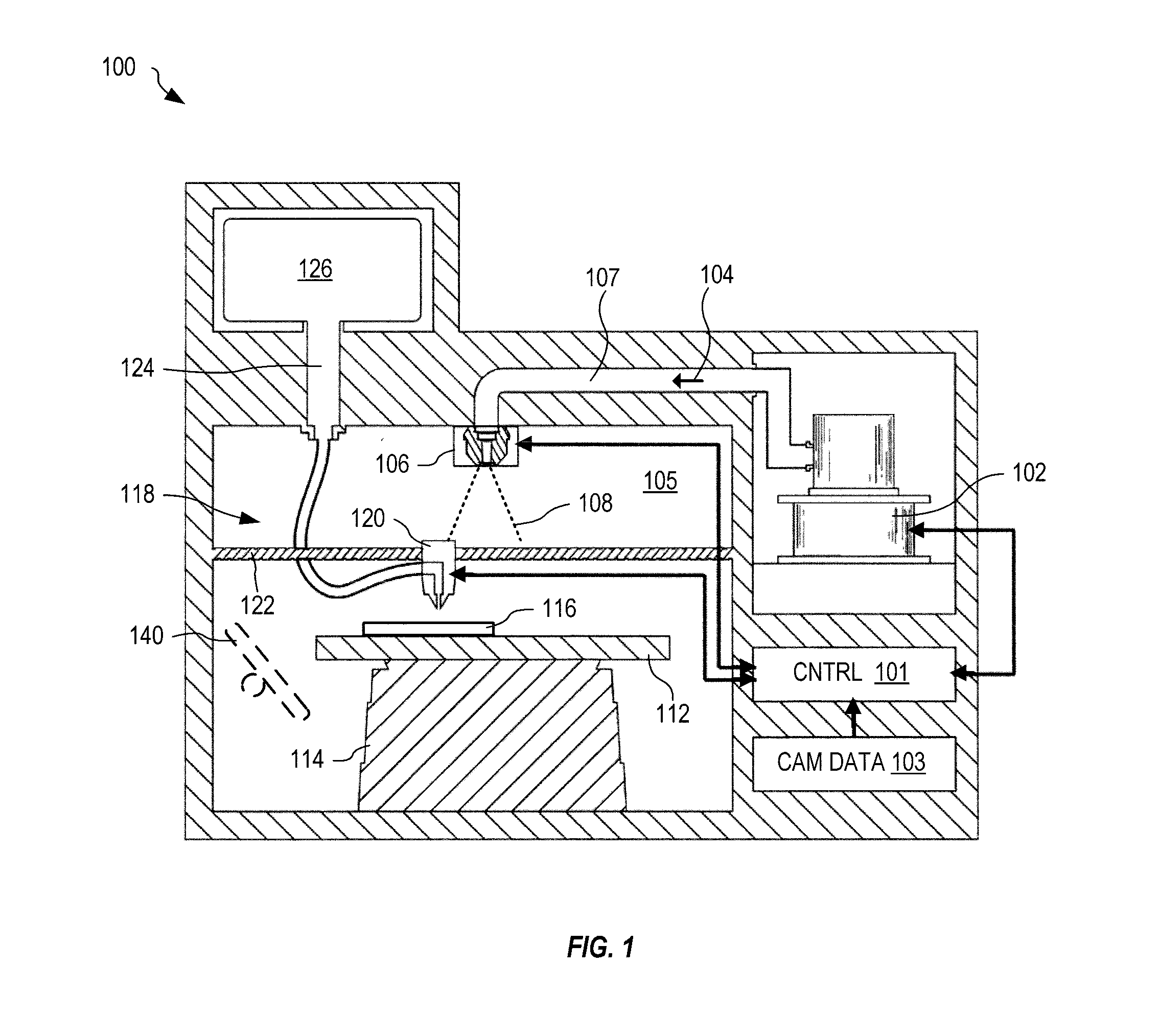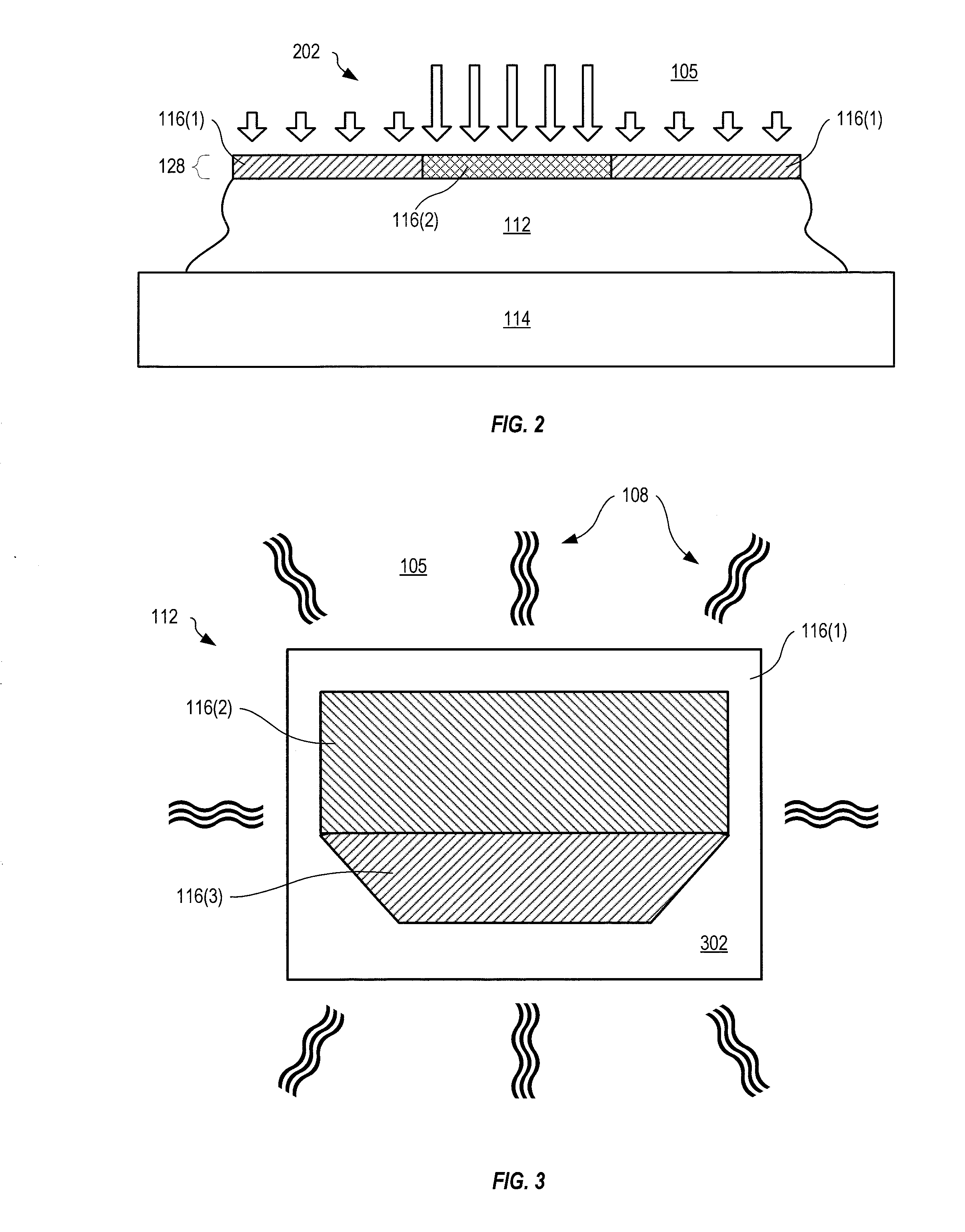Additive Manufacturing Microwave Systems And Methods
a technology of additive manufacturing and microwave systems, applied in the direction of additive manufacturing processes, manufacturing tools, electric/magnetic/electromagnetic heating, etc., can solve the problems of poor fusing, slow and unreasonably expensive laser-based 3d printing process for metallic and ceramic parts, and poor fusing
- Summary
- Abstract
- Description
- Claims
- Application Information
AI Technical Summary
Benefits of technology
Problems solved by technology
Method used
Image
Examples
examples of use and other embodiments
[0087]Work-piece 112 may include two or more objects within heating chamber 105. The two or more objects may define an interface zone where the microwave energy is to be delivered, and the interface zone may be hidden beneath one or more of the objects. In accordance with an exemplary embodiment, energy may be applied in the desired location by one or more of beam shaping units 106 under control of controller 101. For example, based upon chamber characteristics 432 and object shape 434, beam control algorithm 422 determines beam instructions 442 that are used by controller 101 to control beam shaping unit 106 to generate shaped emission 108 to provide energy in the desired location.
[0088]Heating chamber 105 may include an adjustable tuner 140, such as a passive mechanical element that may be moved inside of the cavity using a rail or any other positioning mechanism. One or more tuners 140 may be used to change the geometry of heating chamber 105 enabling better control over energy d...
PUM
| Property | Measurement | Unit |
|---|---|---|
| Power | aaaaa | aaaaa |
| Power | aaaaa | aaaaa |
| Power | aaaaa | aaaaa |
Abstract
Description
Claims
Application Information
 Login to View More
Login to View More - R&D
- Intellectual Property
- Life Sciences
- Materials
- Tech Scout
- Unparalleled Data Quality
- Higher Quality Content
- 60% Fewer Hallucinations
Browse by: Latest US Patents, China's latest patents, Technical Efficacy Thesaurus, Application Domain, Technology Topic, Popular Technical Reports.
© 2025 PatSnap. All rights reserved.Legal|Privacy policy|Modern Slavery Act Transparency Statement|Sitemap|About US| Contact US: help@patsnap.com



